Region of Interest in Computer Vision
Overview
Finding Region of interest (ROIs) in pictures and videos is a fundamental component of computer vision. It is necessary to analyze and process certain regions of an image or video, known as ROIs, because they contain significant information. This blog includes the definition of ROIs and their significance in computer vision applications and methods, such as feature-based, segmentation-based, and deep learning-based ones, for finding ROIs in pictures and videos. We will look at how ROIs may be used to improve the precision of object detection and improvise tracking systems. We will also discuss some of the challenges associated with ROIs in computer vision, such as scalability and computational efficiency. When working with computer vision tasks, the OpenCV library provides various techniques for locating the region of interest using OpenCV in an image or video.
What is the Region of Interest in Computer Vision?
In "Computer Vision," the term "region of interest" (ROI) designates a particular area or region in an image or video that includes "crucial information" that has to be examined and processed. A portion of the overall picture with "special interest" is considered as the "ROI."
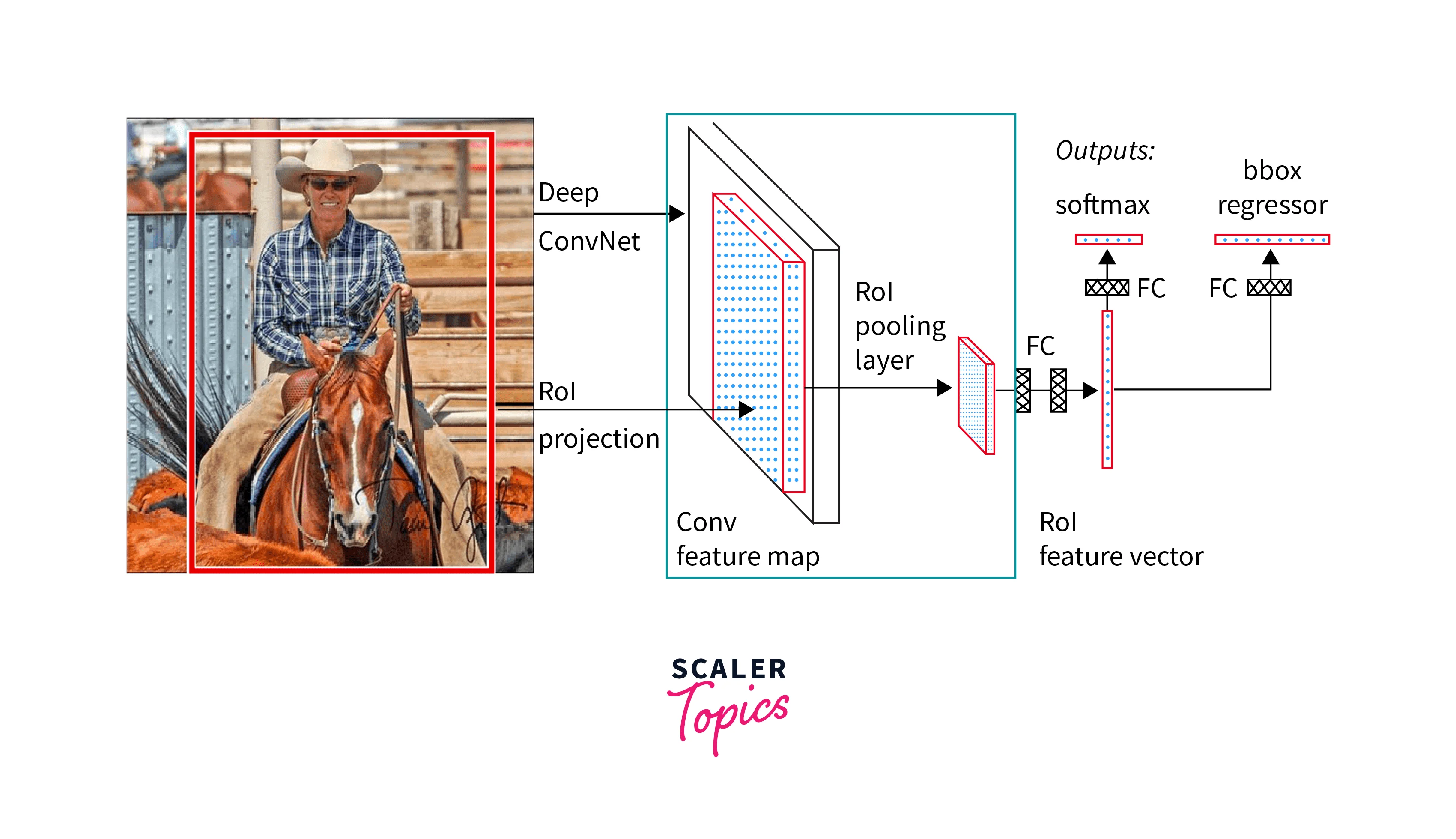
Computer vision applications can benefit from the usage of ROIs. Computer vision algorithms extract the "pertinent information" required to carry out these tasks precisely by recognizing the ROIs.
Definition and Explanation of ROI
In computer vision, the term "region of interest" (ROI) designates a particular area or region in an image or video that is of special interest and importance to the job at hand. The ROI is frequently identified by its position, size, form, or other visual characteristics, but it can also be a subset of the full picture or video.
ROIs are used in various computer vision applications that include object recognition, tracking, and segmentation. In tracking, an ROI may be described as the region where the item is anticipated to travel, but in object recognition, an ROI can be defined as the area that includes an object of interest.
Types of ROIs (rectangular, circular, polygonal, etc.)
Depending on the particular needs of the application, ROIs can be created in a variety of forms, including different sizes, shapes, and kinds. The following are examples of the most typical ROIs used in computer vision:
1. Rectangular ROIs:
The width and height of a rectangular ROI determine its shape, and its location is frequently determined by its centre or top-left corner. Since rectangular ROIs are simple to define and implement, they are frequently used in computer vision applications.

2. Circular ROIs:
Circular ROIs have a radius and a centre, and they are frequently employed in situations where the ROI's form is important. For instance, certain applications of medical imaging employ circular ROIs to assess the size and form of tumors.
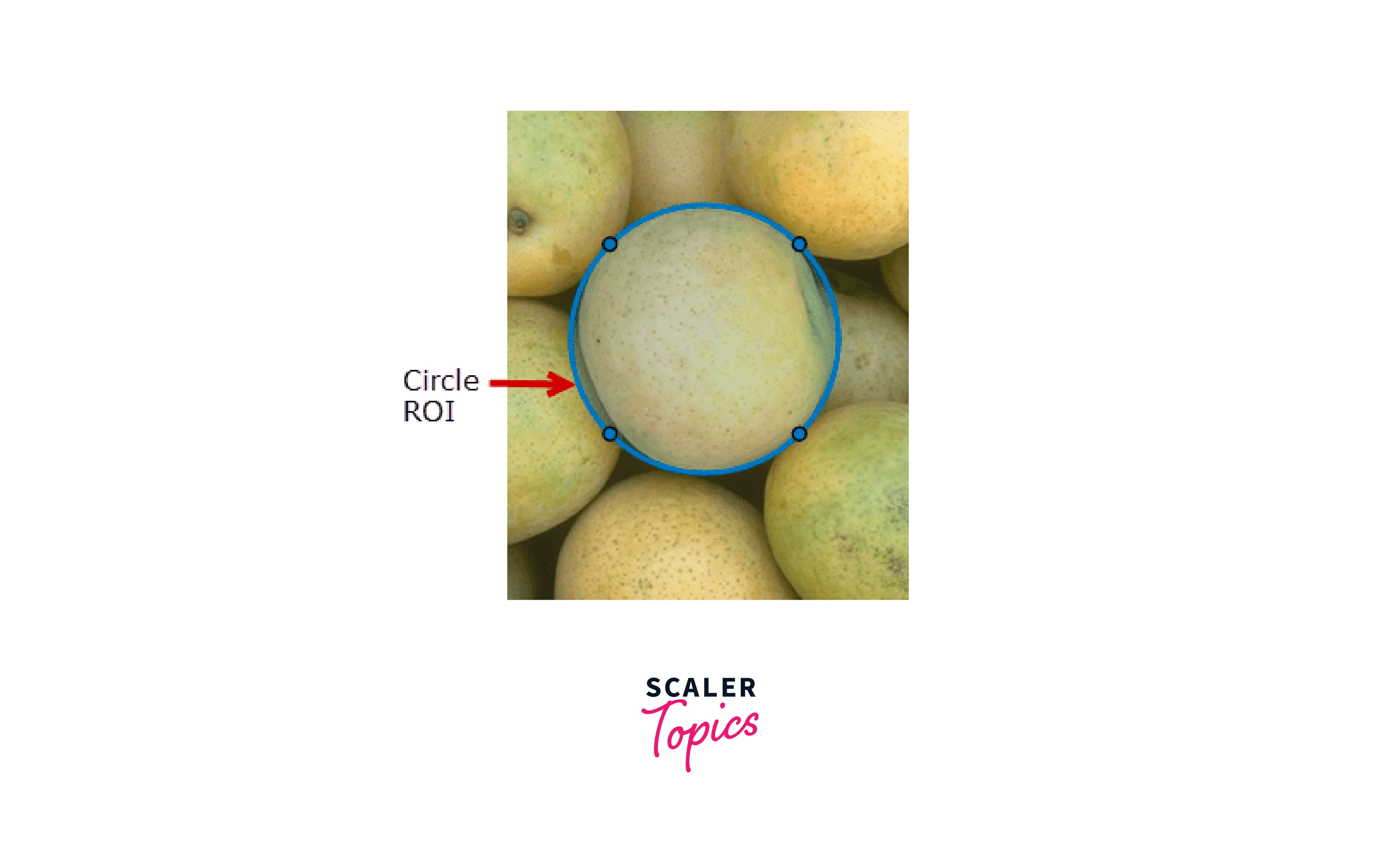
3. Polygonal ROIs:
These ROIs may be shaped to suit the contours of the item of interest. Polygonal ROIs are defined by a group of interconnected vertices. When an object's shape is erratic or non-uniform, like in facial recognition or gesture identification, polygonal ROIs are frequently utilized.
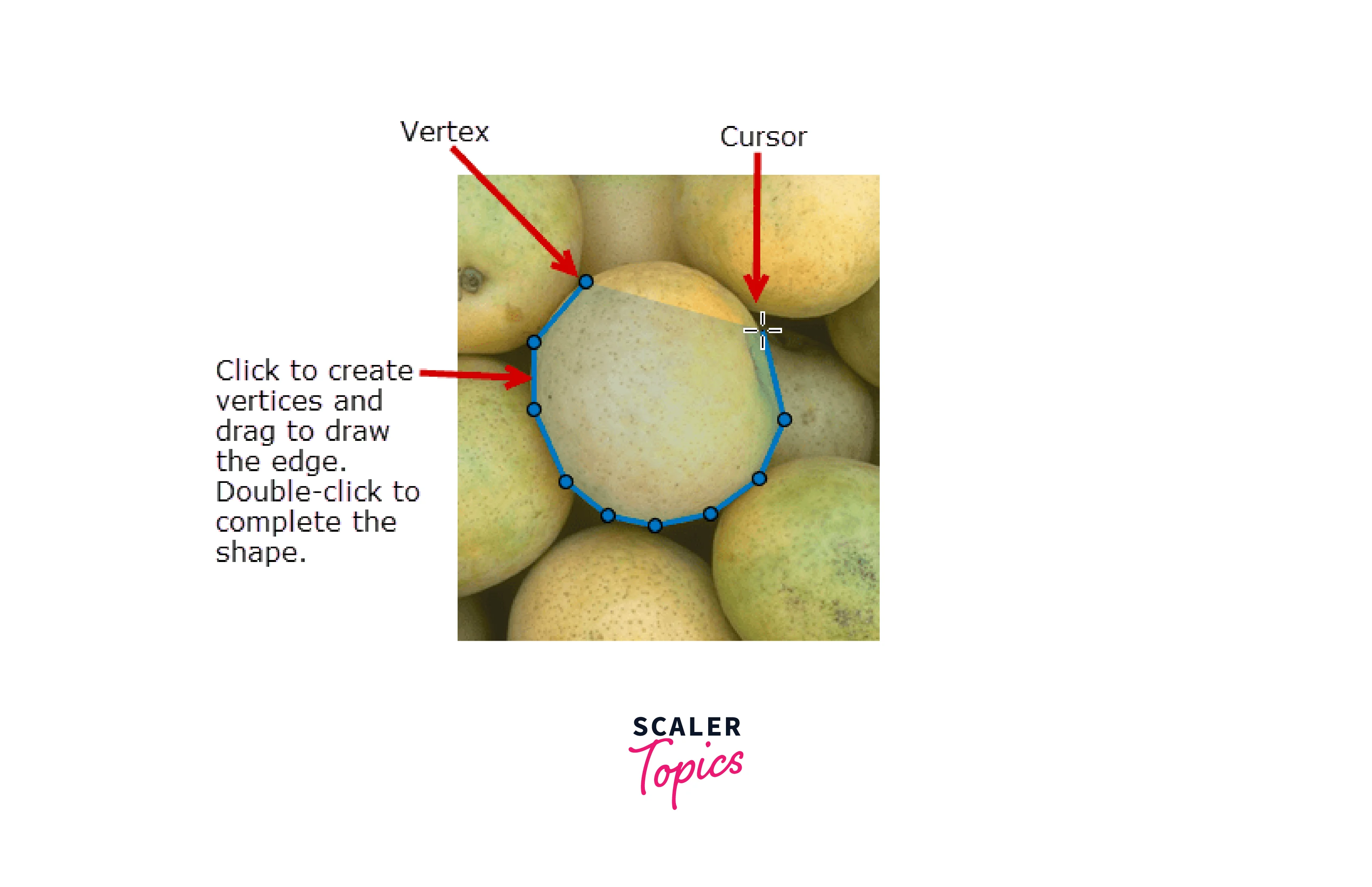
4. Elliptical ROIs:
Elliptical ROIs are employed in situations when the ROI's form is important, but a circular shape is inappropriate. Elliptical ROIs are characterized by their major and minor axes as well as their centre.

5. Freeform ROIs:
Freeform ROIs can be used to extract ROIs that are particular to the user's requirements since they are specified by a user-defined shape.
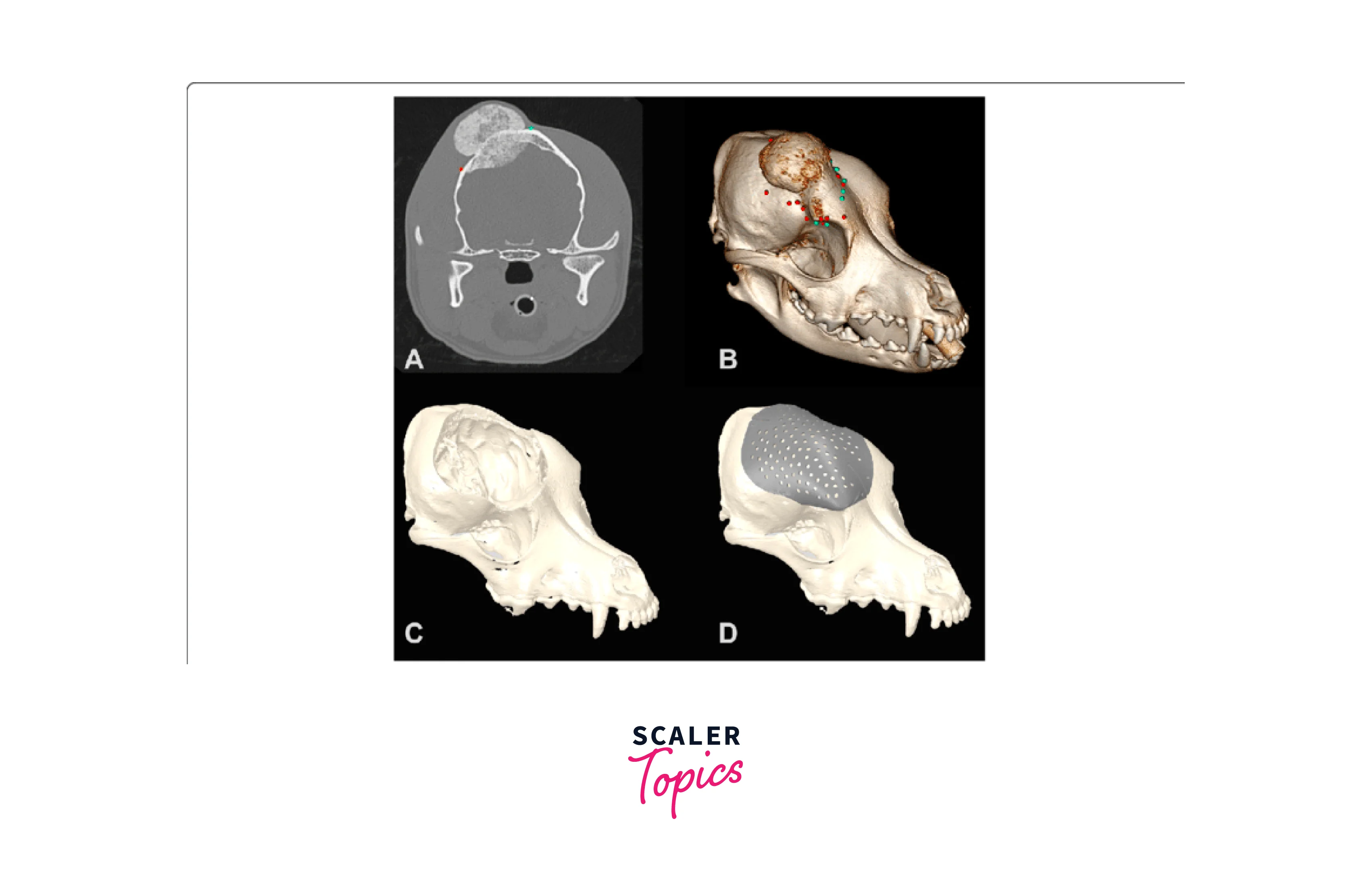
Why ROIs are Used in Computer Vision?
By defining an ROI, computer vision algorithms can focus their analysis on a subset of the visual data rather than processing the entire image or video.
- The usage of ROIs in computer vision is particularly significant in applications such as object detection, tracking, and segmentation.
- Overall, the use of ROIs in computer vision allows algorithms to focus their analysis on the most relevant and informative parts of an image or video, reducing processing time and improving accuracy.
Importance of selecting the right ROI
The ROI specifies which region of the image or video the algorithm will examine, and picking the incorrect ROI may produce results that are incorrect or irrelevant.
- The size of the area should be one of the main considerations when choosing an ROI.
- If the ROI is too high, the algorithm might take longer to process the data and might be more likely to include unrelated data in the analysis.
- On the other hand, if the ROI is too small, crucial features might be missed, leading to unreliable results.
Methods for Selecting Region of Interest
In computer vision, there are various ways to choose a region of interest (ROI), each having benefits and drawbacks. Here are a few of the most popular techniques:
User-defined ROI: With this technique, the ROI is chosen manually by the user by tracing a polygon or bounding box around the subject of interest. The user may pick any region in the image or video using this simple, versatile way. It may not be appropriate for situations when the item of interest is moving swiftly or is challenging to monitor due to its time-consuming nature.
Manual Selection of ROIs
Object identification: Using object detection methods, the ROI may be automatically chosen based on the object of interest in the picture or video. This technique is quick and effective, making it appropriate for real-time applications like surveillance or self-driving cars. However, it needs a trained model and might not be appropriate for scenes that are cluttered or complex.
Background subtraction: Background subtraction algorithms are able to distinguish between the foreground and background areas in an image or video and choose the ROI depending on the foreground area. The accuracy of this technique can be increased by combining it with object detection algorithms to track moving objects in videos. However, it might not be appropriate in situations where the target object is static or partially obscured.
Automatic Selection of ROIs Using Techniques Such as Edge Detection, Color Segmentation, and Object Detection
In computer vision applications, automatic ROI selection employing methods like edge detection, colour segmentation, and object detection is becoming more and more common. These methods can automate the selection of ROIs, reducing time spent and improving accuracy.
When selecting the ROI, edge detection techniques can automatically identify the edges of objects in an image or video. The boundaries of the vehicle may be utilized to define the ROI in applications like vehicle detection, where this strategy is very helpful.
Advantages and Disadvantages of Each Method
In computer vision applications, there are various ways to choose regions of interest (ROIs), each with pros and cons. Here are some advantages and disadvantages of each technique:
Manually choosing ROIs:
Advantages:
- The ROI can be customized to meet the particular requirements of the application.
- can be used in circumstances where other methods might not work.
- If the user is familiar with the subject of interest, it may be more accurate.
Disadvantages:
- Time-consuming, particularly if the user wants to choose several ROIs if the item of interest is moving fast.
- Can be subjective, causing variations in ROI selection among users.
- For real-time applications, ineffective.
Automatic selection of ROIs using edge detection:
An approach used in computer vision and image processing to identify and extract regions of interest in a picture is the automatic selection of ROIs (Regions of Interest) using edge detection. Edge detection is a process that analyses changes in pixel intensities to identify the boundaries or edges of objects in an image. This data may be used to identify sections of a picture containing items or features of interest.
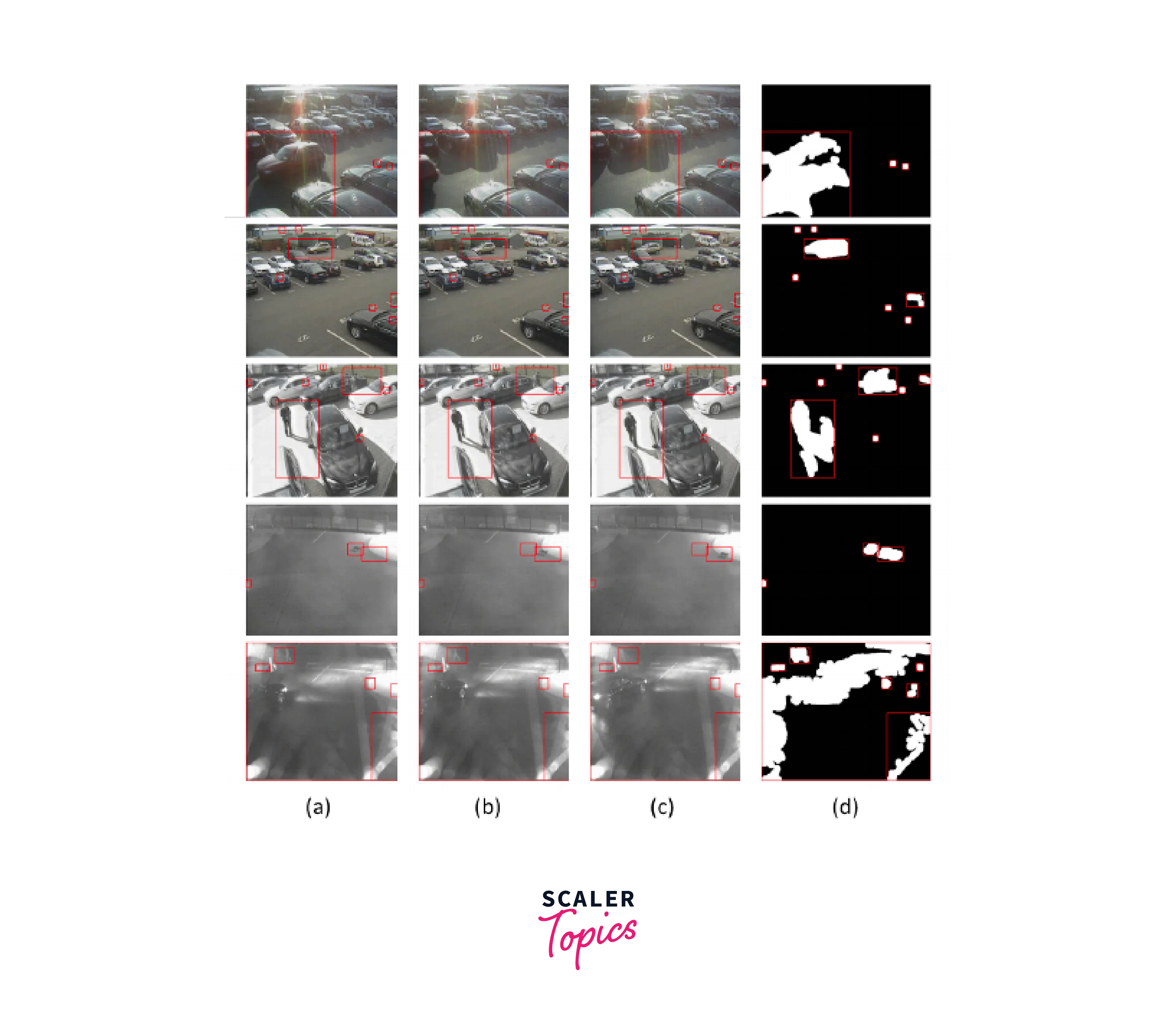
Advantages:
- It is effective and quick, making real-time applications possible.
- It Can occasionally be more precise than manual selection, especially if the object of interest has clearly defined edges.
- Can be used to simultaneously detect multiple objects.
Disadvantages:
- When the item of interest lacks clearly defined borders, it cannot be effective.
- Situations with intricate backdrops or occlusions might not perform effectively.
Automatic selection of ROIs using color segmentation:
Colour segmentation is a method used in computer vision and image processing to detect and extract regions of interest in an image based on their colour.

Colour segmentation is the technique of identifying sections in a picture with similar colour properties. This data may be used to identify sections of a picture containing items or features of interest.

Advantages:
- Can be useful when the object of interest has a recognizable colour.
- Can be applied to real-time ROI selection.
Disadvantages:
- When the object of interest lacks a recognizable colour, it can not operate effectively.

- Alterations in lighting conditions could have an impact.
Automatic selection of ROIs using object detection:
Automatic selection of ROIs (Regions of Interest) using object detection is a computer vision and image processing approach for identifying and extracting regions of interest in an image based on the presence of specified objects.

The technique of identifying the position and boundaries of items in a picture is known as object detection. This data may be used to identify sections of a picture containing items or features of interest.

Advantages:
- It is effective and quick, making real-time applications possible.
- In some circumstances, especially when the item of interest is complicated or challenging to identify, it may be more accurate than manual selection.
- Can be used to simultaneously detect multiple objects.
Disadvantages:
- It is dependent on training data, and it could not perform effectively for items that aren't represented in the training data.
- Costly computationally, particularly for deep learning-based methods.
- In circumstances where the item of attention is partially obscured or has a complicated background, it might not be successful.
Applications of ROI in Computer Vision
Region of interest (ROI) selection is a core component of computer vision and has several uses in a variety of fields. In computer vision, the following are some of the most typical ROI applications:
-
Object tracking and surveillance:
Real-time video feeds may be followed to find items of interest using ROI selection, which is also used for surveillance. When a user has to keep an eye on a certain region or item, such as in security and surveillance applications, this is helpful. -
Medical imaging:
The ROI selection technique is used in medical imaging to separate and examine particular bodily sections or organs. Consequently, medical professionals can accurately diagnose and track patient conditions. -
Autonomous cars:
Self-driving cars employ ROI selection to find and follow things, including other cars, people walking along the road, and traffic signals. This is essential to ensure the security of travelers and other drivers. -
Robotics:
Robots can recognize and move things in their surroundings by using ROI selection. This is helpful in situations like manufacturing, where robots must carefully choose and put products. -
Agriculture:
In the field of agriculture, ROI selection may be used to detect and categorize crops, keep track of soil moisture, and spot pest infestations. Farmers may use this to optimize their yields and make data-driven decisions.

Object Tracking and Detection
One of the most common uses of Region of Interest (ROI) in computer vision is object tracking and detection. While object detection refers to the process of detecting the presence of an object of interest in an image or video frame, object tracking involves finding a specific object of interest in a sequence of images or video frames.

Various methods, such as feature-based methods, appearance-based methods, and deep learning-based methods, can be used to track and detect objects.
A neural network is trained using deep learning techniques to find and follow the item of interest. Due to its great accuracy and resilience, this method has gained popularity in recent years.
![]()
Face Detection and Recognition
Another common use of Region of Interest (ROI) in computer vision is face identification and recognition. Face recognition identifies and verifies an individual's identification based on their facial traits, whereas face detection identifies the existence and placement of faces in an image or video frame.
Convolutional Neural Networks (CNNs), in particular, have demonstrated outstanding effectiveness in both face identification and recognition using deep learning-based techniques. CNNs may be trained to recognize certain facial patterns and traits, which makes it possible for them to recognize and reliably detect faces in a variety of contexts.

Image Segmentation
Another crucial use of Region of Interest (ROI) in computer vision is image segmentation. In order to segment a picture, it must be divided into a number of regions or segments, each of which represents a different item or portion of the image. The region or area of interest for image segmentation may be defined using ROI.
Medical imaging, object identification, and autonomous driving are just a few of the computer vision applications that image segmentation may be used for. Image segmentation can be used in medical imaging to recognize and separate certain organs or tissues for examination or diagnosis.
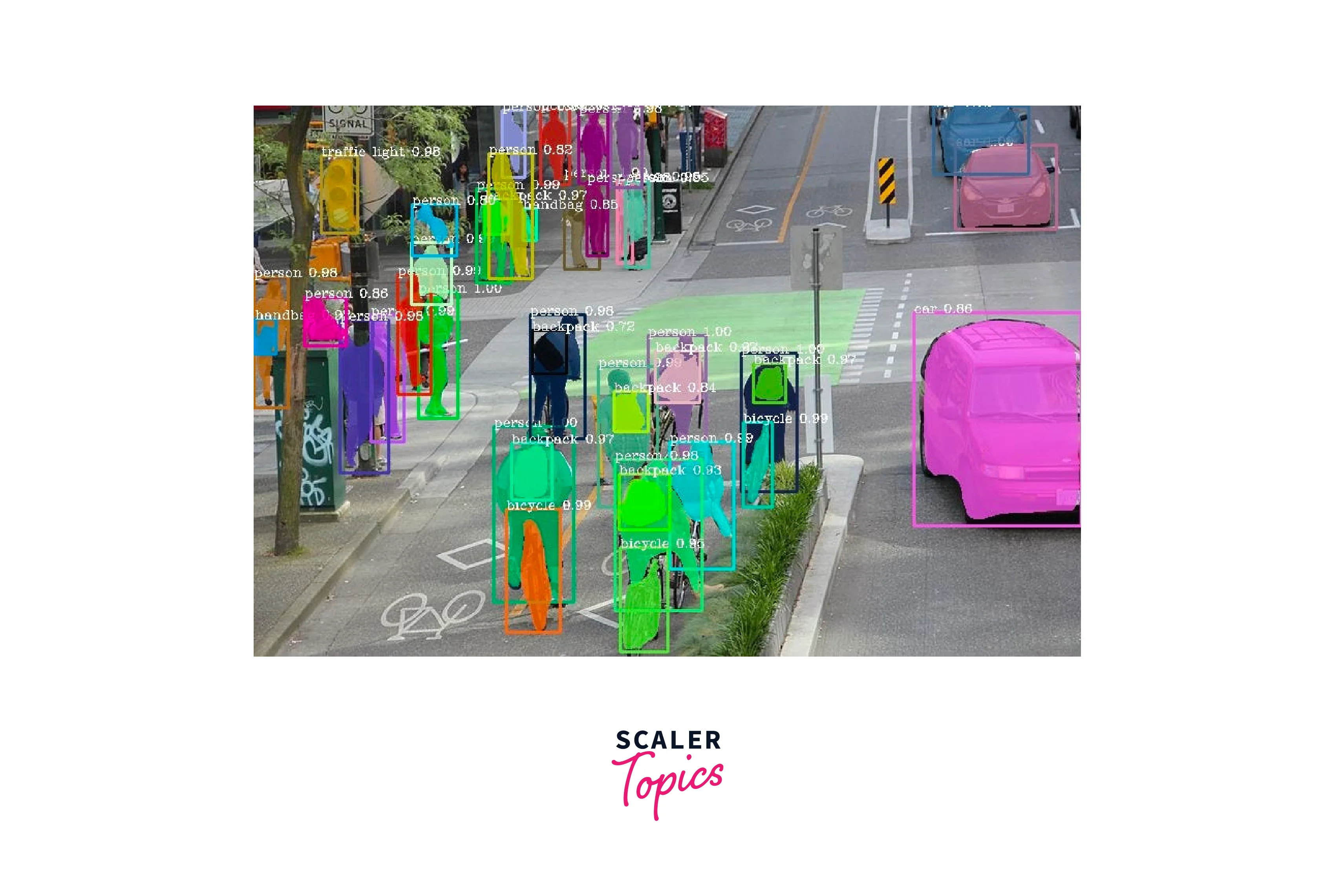
Optical Character Recognition (OCR)
Region of Interest (ROI) is another tool used in computer vision for optical character recognition (OCR). OCR is the process of identifying and extracting text from a document or an image. The region or area of interest containing the text in the picture or document may be identified using ROI.
OCR has several uses in a variety of fields, including banking, healthcare, and education. OCR can be used in the financial industry to automatically extract data from invoices, receipts, and other financial documents, saving time and labor by eliminating the need for manual data entry. OCR may be used in the healthcare industry to extract and analyze patient data from medical records, allowing for more effective and precise diagnosis and treatment.

Medical Imaging
Another use of Region of Interest (ROI) in computer vision is in medical imaging. Many of the details in medical pictures, like X-rays, CT scans, and MRI scans, are unrelated to the diagnosis or treatment of a specific medical problem. ROI can help you locate and extract the region or area of interest that contains important data.
ROI has a wide range of applications in medical imaging, including tumor detection and segmentation, organ identification, and image registration. For instance, ROI may be used to locate the area of the picture containing the tumor while detecting and segmenting tumors.

Autonomous Vehicles and Robotics
Region of Interest (ROI) in computer vision has several vital applications in robotics and autonomous vehicles. ROI is used in various fields to locate and follow real-time items of interest.
ROI can be used, for instance, in autonomous cars to recognize and track pedestrians, other vehicles, and traffic signs. The computer vision system may concentrate on analyzing just the pertinent data by defining the zone of interest around these objects, improving accuracy and efficiency.
In robotics, ROI can be used to track the movement of objects or parts within a system. For example, in a manufacturing plant, ROI can be used to track the movement of components along a production line. By identifying the region of interest around the components, the computer vision system can track their movement and ensure that they are assembled correctly.

Other Use Cases
Region of Interest (ROI) in computer vision has numerous additional use cases outside the ones just listed. Here are a few instances:
-
Sports analytics:
ROI may be used in sports analytics to track and examine player mobility in activities like football, basketball, and tennis. Computer vision systems can follow the player's movement, spot trends, and offer insights into their performance by specifying the region of interest surrounding them. -
Security and surveillance:
ROI may be applied to security and surveillance applications to identify and monitor people and things. ROI can be used, for instance, in airports to follow the movement of passengers and spot those who could be carrying contraband. -
Agriculture:
Crop health and growth trends may be examined using ROI. Computer vision systems can analyze crop development, spot disease or pest infestations, and offer insights into agricultural production by specifying the zone of interest around the crops. -
Retail analytics:
ROI is a tool that may be used to study consumer behavior in retail settings. Computer vision systems may track consumer movement and behavior, identify shopping trends, and offer insights into client preferences by specifying the zone of interest surrounding certain parts of a business. -
Robotics in construction:
ROI may be used to analyze and monitor the development of building projects. Robotics in construction. Computer vision systems can monitor progress and follow the movement of tools and supplies on a construction site by defining the zone of interest around certain areas in real time.
Implementation of Region of Interest in OpenCV
The open-source computer vision library known as OpenCV offers a variety of tools for processing and analyzing images. Region of Interest (ROI) implementation functionality is also provided for use with photos and videos. Here is a quick overview of how ROI in OpenCV works:
- The first step is to use the OpenCV library to load the picture or video that you wish to analyze, region of interest in OpenCV, into your program.
- Define the ROI: The ROI that you wish to extract from the picture or video must then be defined. You may accomplish this by drawing rectangles or circles around the ROI using built-in OpenCV methods like cv2.rectangle() or cv2.circle().
- Once the ROI has been established, you can use the cv2.crop() function to extract it from the original image or video. This method returns a new picture or video that only contains the ROI after receiving the coordinates of the ROI as input.
- Analyse the ROI: Once the ROI has been extracted, you can use OpenCV's built-in functions or your own unique algorithms to do any required analysis on it.
Output

This program imports a picture, creates a 200x200 rectangular ROI using the coordinates (100,100), paints a green rectangle around the ROI, and then uses the cv2.crop() method to extract the ROI and show it in a new window. The ROI can then be subjected to any appropriate analysis.
Best Practices for Using ROI in Computer Vision
- Select the best ROI strategy:
Choosing the right ROI type is crucial and should be done in accordance with the application and the image's features. A circular ROI may be more suited for object detection in circular items like coins or fruits, whereas a rectangular ROI may be effective for text recognition applications. - Make sure the ROI includes all pertinent data:
The ROI should contain all data that is essential to completing the assignment and should not include any superfluous areas. A clearly defined ROI may speed up processing and increase precision. - Optimise the ROI size to strike a compromise between accuracy and performance. A big ROI may lengthen processing time and include pointless details, whereas a small ROI may shorten processing time but leave out important elements.
- Think about the image resolution:
The ROI size and the picture resolution should both be taken into account. It is important to choose the ROI such that it does not overlook any important information since it is either too big or too tiny for the picture resolution. - When necessary, use multiple ROIs:
Some applications might need a number of ROIs to gather all the necessary data. For instance, many ROIs could be necessary for face detection to capture the face and the eyes. - Try out several ROI selection methods:
Some ROI selection methods may be more suited for a given application than others. To find the ideal strategy, it's crucial to experiment with several methods. - Evaluation of the ROI's performance is necessary to ascertain whether it satisfies the application's criteria. Monitoring the ROI's performance and making adjustments as needed is crucial.
Choosing the Right ROI Size and Shape
In many computer vision applications, selecting the appropriate ROI is crucial. The ROI should be carefully chosen such that it only includes information that is pertinent to the area of interest and leaves out other background information. The computational cost of the methods utilized in the study is also decreased with the aid of a suitable ROI selection. The chosen area of interest's size, shape, and location should all be taken into account when choosing an ROI, as should the specific traits or patterns that will be studied there. To increase efficiency and accuracy, the ROI selection process may be automated utilizing a variety of methods, including edge detection, colour segmentation, and object recognition.
Conclusion
- The Region of Interest (ROI) is a crucial idea in computer vision that enables us to concentrate on a particular region of an image or video frame.
- We may increase the precision and effectiveness of our computer vision system by choosing the appropriate ROI.
- While automatic selection methods like edge detection, colour segmentation, and object detection can save time and effort, manual selection of ROIs offers greater control over the selection process.
